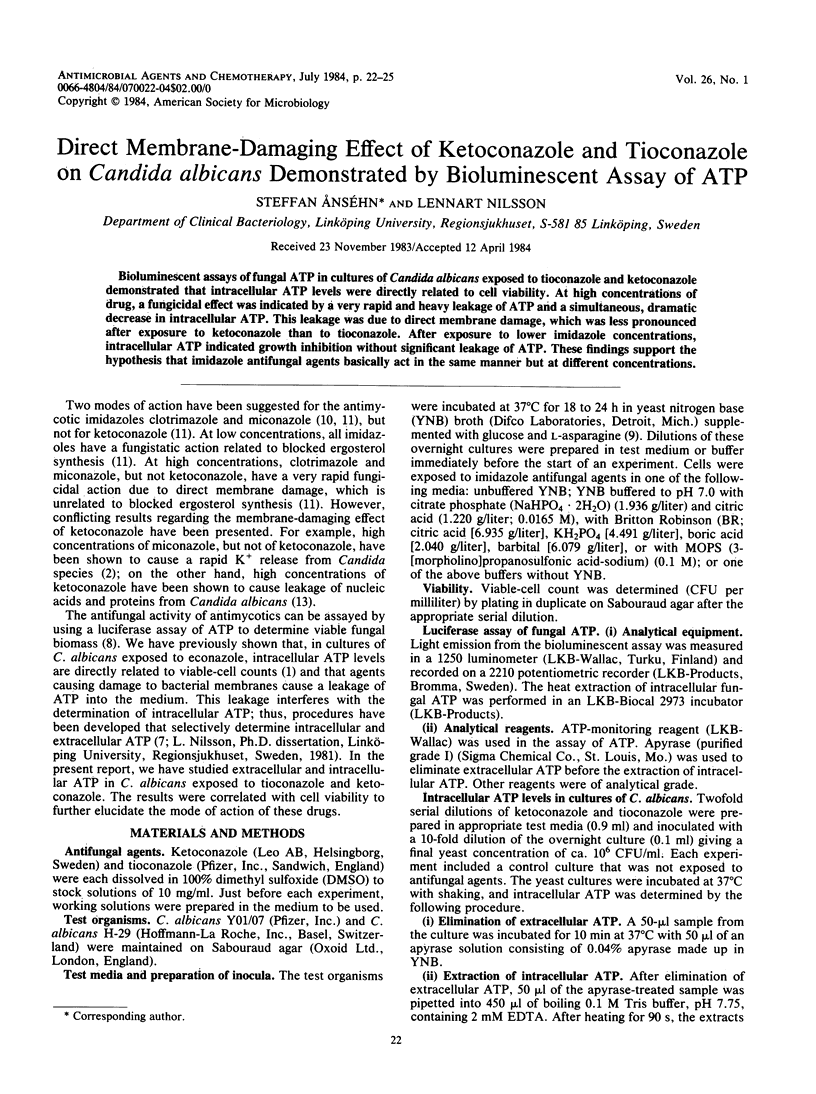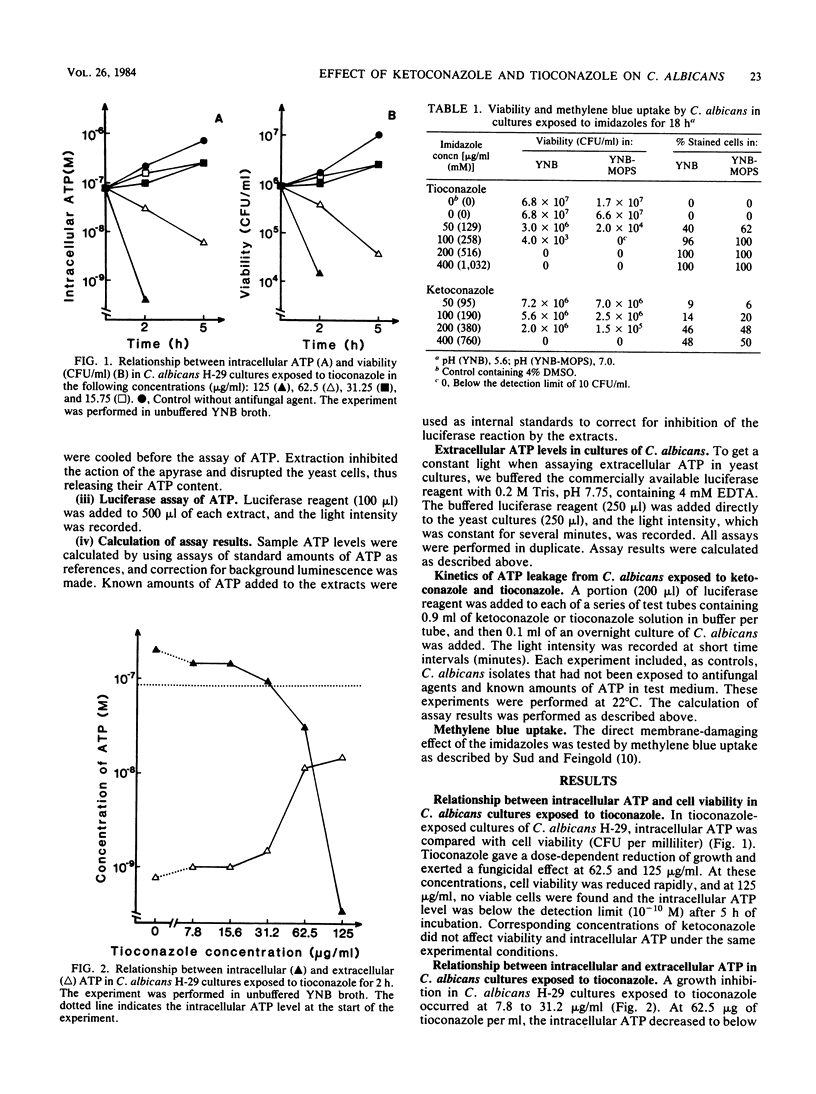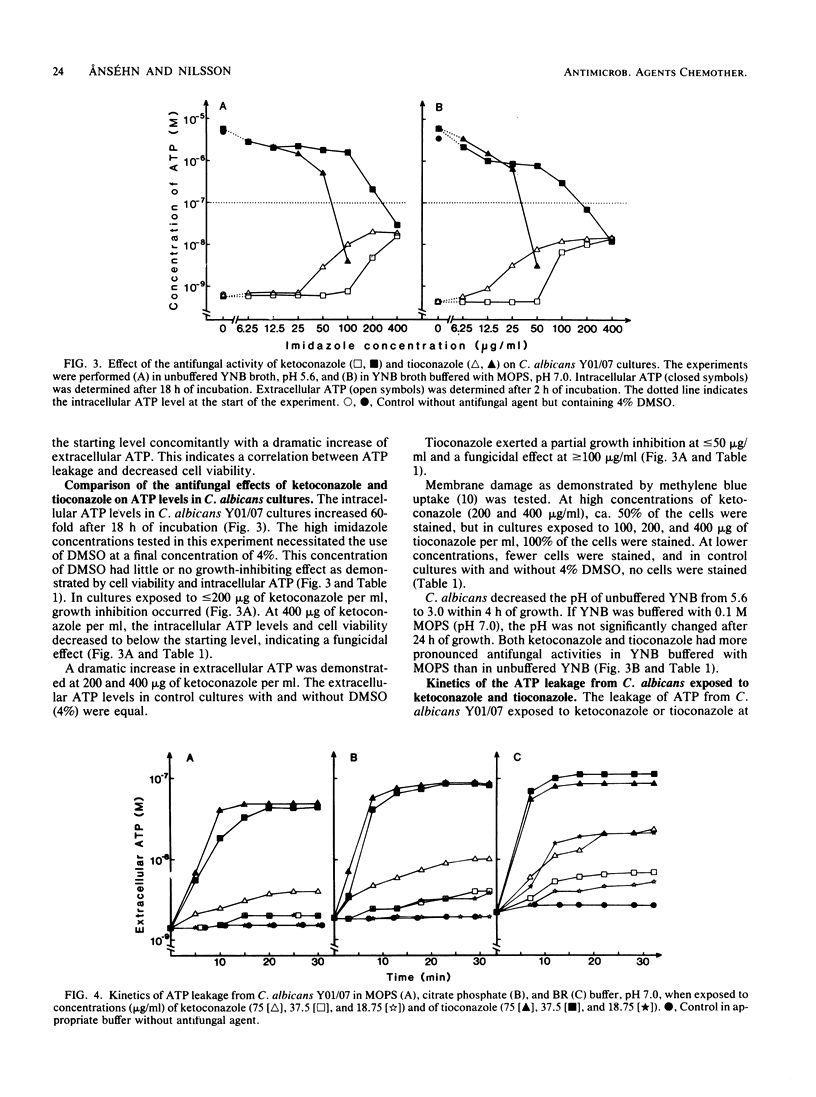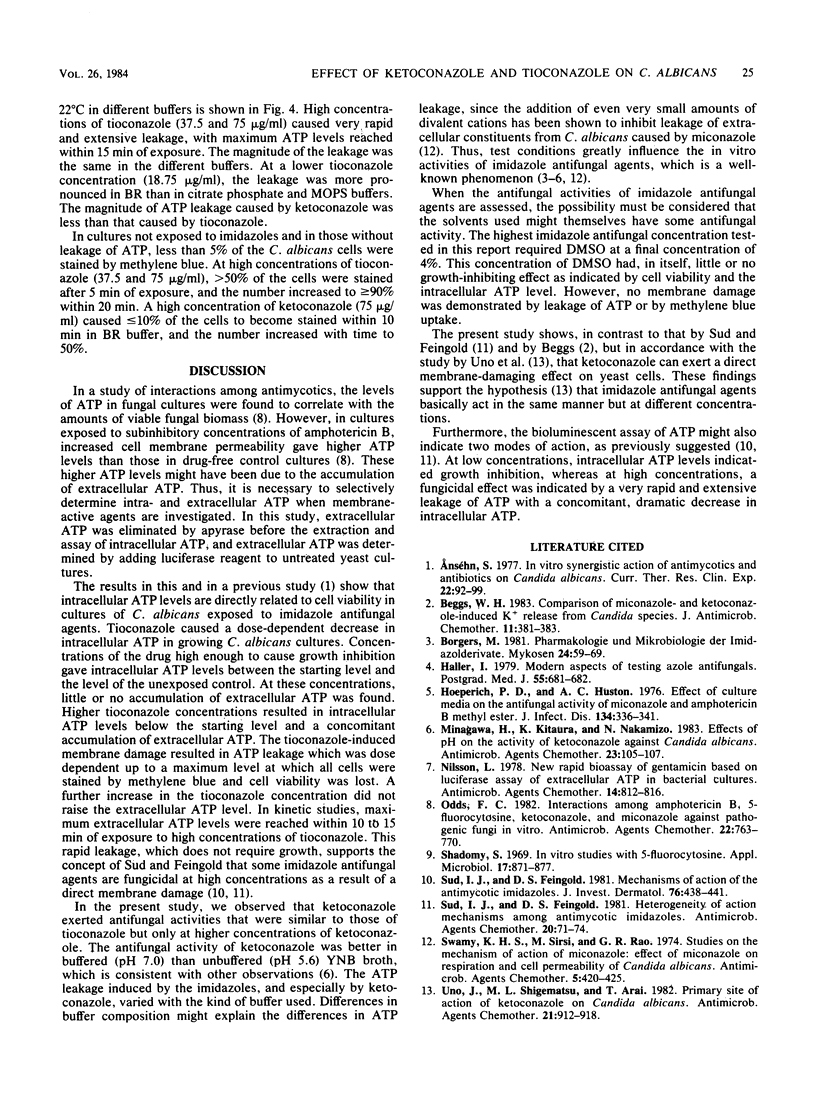Abstract
Bioluminescent assays of fungal ATP in cultures of Candida albicans exposed to tioconazole and ketoconazole demonstrated that intracellular ATP levels were directly related to cell viability. At high concentrations of drug, a fungicidal effect was indicated by a very rapid and heavy leakage of ATP and a simultaneous, dramatic decrease in intracellular ATP. This leakage was due to direct membrane damage, which was less pronounced after exposure to ketoconazole than to tioconazole. After exposure to lower imidazole concentrations, intracellular ATP indicated growth inhibition without significant leakage of ATP. These findings support the hypothesis that imidazole antifungal agents basically act in the same manner but at different concentrations.
Full text
PDF



Selected References
These references are in PubMed. This may not be the complete list of references from this article.
- Beggs W. H. Comparison of miconazole- and ketoconazole-induced release of K+ from Candida species. J Antimicrob Chemother. 1983 Apr;11(4):381–383. doi: 10.1093/jac/11.4.381. [DOI] [PubMed] [Google Scholar]
- Haller I. Modern aspects of testing azole antifungals. Postgrad Med J. 1979 Sep;55(647):681–682. doi: 10.1136/pgmj.55.647.681. [DOI] [PMC free article] [PubMed] [Google Scholar]
- Hoeprich P. D., Huston A. C. Effect of culture media on the antifungal activity of miconazole and amphotericin B methyl ester. J Infect Dis. 1976 Oct;134(4):336–341. doi: 10.1093/infdis/134.4.336. [DOI] [PubMed] [Google Scholar]
- Minagawa H., Kitaura K., Nakamizo N. Effects of pH on the activity of ketoconazole against Candida albicans. Antimicrob Agents Chemother. 1983 Jan;23(1):105–107. doi: 10.1128/aac.23.1.105. [DOI] [PMC free article] [PubMed] [Google Scholar]
- Nilsson L. New rapid bioassay of gentamicin based on luciferase assay of extracellular ATP in bacterial cultures. Antimicrob Agents Chemother. 1978 Dec;14(6):812–816. doi: 10.1128/aac.14.6.812. [DOI] [PMC free article] [PubMed] [Google Scholar]
- Odds F. C. Interactions among amphotericin B, 5-fluorocytosine, ketoconazole, and miconazole against pathogenic fungi in vitro. Antimicrob Agents Chemother. 1982 Nov;22(5):763–770. doi: 10.1128/aac.22.5.763. [DOI] [PMC free article] [PubMed] [Google Scholar]
- Shadomy S. In vitro studies with 5-fluorocytosine. Appl Microbiol. 1969 Jun;17(6):871–877. doi: 10.1128/am.17.6.871-877.1969. [DOI] [PMC free article] [PubMed] [Google Scholar]
- Sreedhara Swamy K. H., Sirsi M., Ramananda Rao G. R. Studies on the mechanism of action of miconazole: effect of miconazole on respiration and cell permeability of Candida albicans. Antimicrob Agents Chemother. 1974 Apr;5(4):420–425. doi: 10.1128/aac.5.4.420. [DOI] [PMC free article] [PubMed] [Google Scholar]
- Sud I. J., Feingold D. S. Heterogeneity of action of mechanisms among antimycotic imidazoles. Antimicrob Agents Chemother. 1981 Jul;20(1):71–74. doi: 10.1128/aac.20.1.71. [DOI] [PMC free article] [PubMed] [Google Scholar]
- Sud I. J., Feingold D. S. Mechanisms of action of the antimycotic imidazoles. J Invest Dermatol. 1981 Jun;76(6):438–441. doi: 10.1111/1523-1747.ep12521036. [DOI] [PubMed] [Google Scholar]
- Uno J., Shigematsu M. L., Arai T. Primary site of action of ketoconazole on Candida albicans. Antimicrob Agents Chemother. 1982 Jun;21(6):912–918. doi: 10.1128/aac.21.6.912. [DOI] [PMC free article] [PubMed] [Google Scholar]


